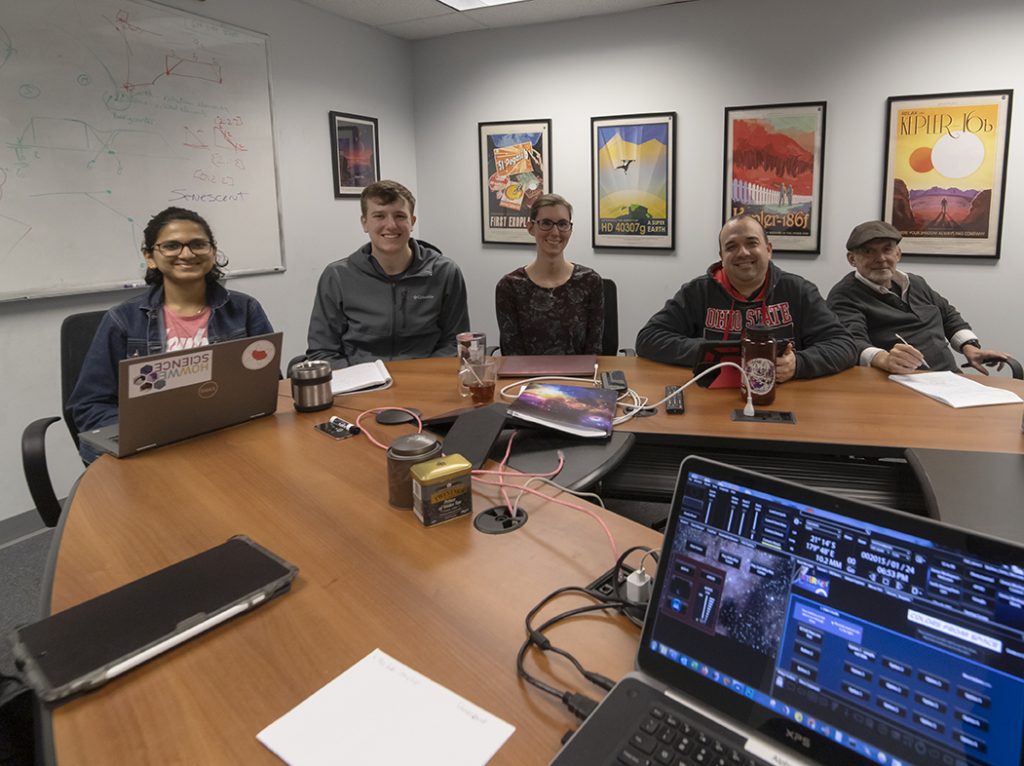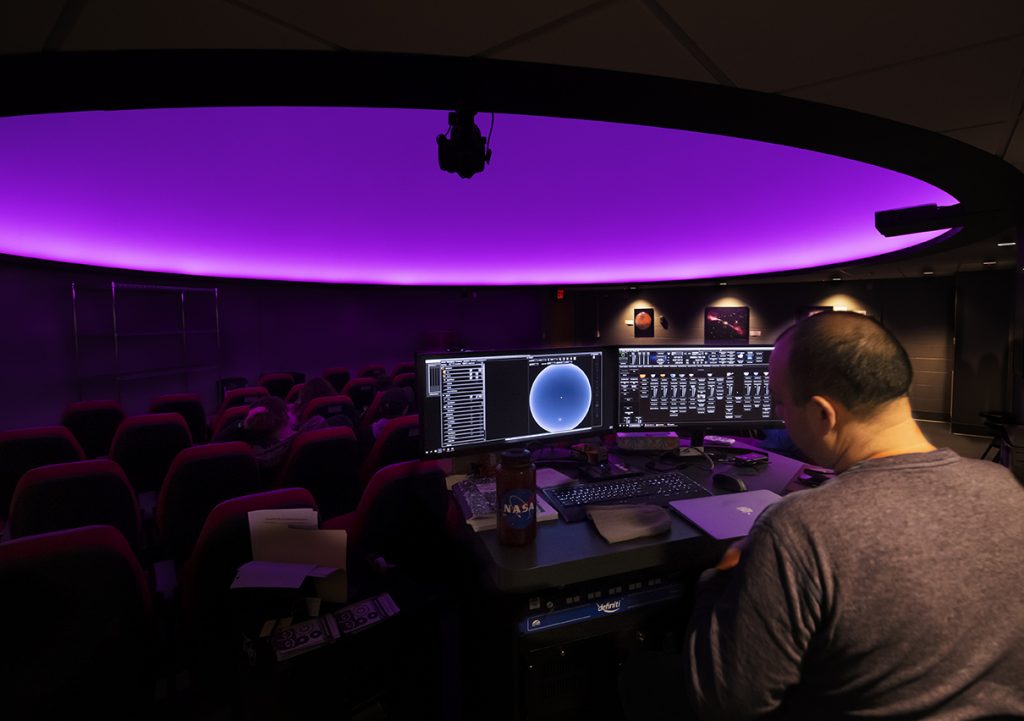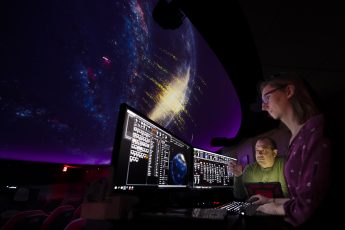The Ohio State University (OSU) in Columbus, a leading astronomy research center, has completed an upgrade of their Arne Slettebak Planetarium to Sky-Skan’s DigitalSky-Dark Matter™ platform. Equipped with new servers and the latest Nvidia graphics, the 9-meter facility is now a perfect venue for teaching basic astronomy and for displaying, studying, and interpreting unique astronomical data collected by OSU researchers.
Planetariums have been used for decades to teach motions of the sky, constellations, Moon phases, and planetary motions. These new tools, added to the planetarium’s existing video projectors, support such traditional functions plus far-reaching teaching goals in modern astrophysics.
Following installation in February 2020, Sky-Skan performed five days of training for students, faculty, and staff, introducing them to both traditional planetarium tools and to the ability to incorporate their own data sets. The upgraded planetarium can help undergraduates and graduates learn new ways of viewing astronomical data, in addition to running popular fulldome shows. All visualization modes and subjects can be seamlessly orchestrated without having to switch display modes or apps.

Photo by Martin Ratcliffe, Sky-Skan.
OSU astronomers have wide-ranging research engagements, such as:
- The KELT survey for extrasolar planets
- The ASSASN all-sky supernova search project (whose leaders recently won the American Astronomical Society’s Beatrice M. Tinsley and Heineman Prizes)
- Star formation and interstellar chemistry tracing the chemical make-up of stars across our Milky Way Galaxy and beyond
- Active Galactic Nuclei
- Gamma Ray Bursts
- Cosmology
Coming soon, data from the National Science Foundation’s new Vera C. Rubin Observatory (formerly the Large Synoptic Survey Telescope), which is operated by a university consortium of which OSU is a founding member, will allow new forays into dynamical display of events occurring each night – such as hundreds of Type 1a supernovae exploding in distant galaxies, new discoveries in the Kuiper Belt, and new exoplanetary systems. The advanced dynamical engine of DigitalSky-Dark Matter is built to handle the forthcoming data deluge.
With this upgrade, OSU joins a growing retinue of university planetariums using Sky-Skan’s advanced tools, from Pomona College in California, the Fiske Planetarium at the University of Colorado Boulder, and Youngstown State University, also in Ohio. Universities with research faculty using the same system allows for collaborations and shared show development.

Photo by Martin Ratcliffe, Sky-Skan.
The 63-seat Slettebak Planetarium has been offering educational programs on the night sky to OSU students and the central Ohio community since 1967. It is now poised for a new life opening windows on the universe for thousands of students.


